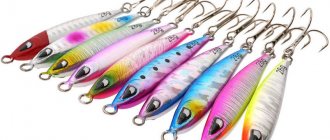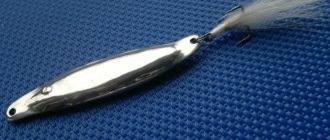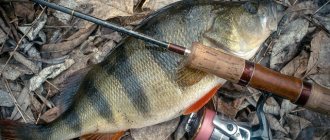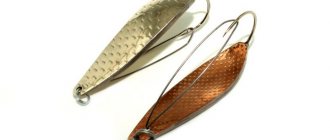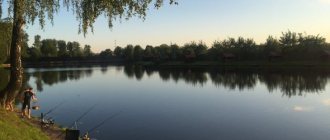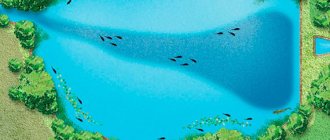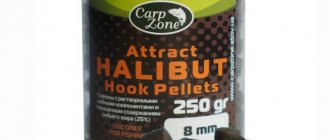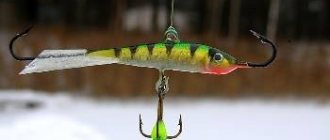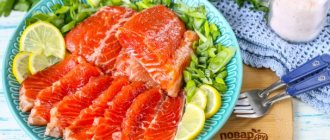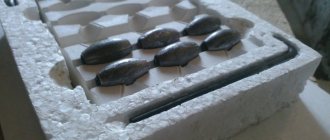Yuri 12/14/2020 173
I'm just a real fishing fan. Besides the fact that I really enjoy just going fishing and enjoying the process of catching fish, I am also a fan of the fact that I can regularly develop in this area. I constantly test new types of lures, baits, tackle and other modern products. And today I’ll tell you about jigs, which many even experienced fishermen have not yet heard of.
A jig spoon is one of the types of oscillating spoons, which is usually used for vertical fishing. In fact, this is the most effective product that opens up the opportunity for a fisherman to catch a fish under any conditions.
To be honest, I became acquainted with it relatively recently, however, I have already tested it more than once in freshwater bodies. Lightweight models for sea fishing have even moved into the spinning boxes of most fishermen. The jig bait for asp is especially popular. In general, this is a basic bait that is now used in reservoirs for hunting pike perch and asp. Therefore, I will share with you the features of jig fishing, and also tell you about my personal experience of using this bait for hunting freshwater representatives.
Jig - what is it?
What is a jig ? In fact, a jig is a subspecies of an oscillating spoon. But unlike the classic wobble, which is designed for uniform retrieves with a smooth shedding during pauses, a jig is needed for more aggressive, jerky retrieves. That is, the main game of the jig is set by the fisherman himself, performing various manipulations with the rod when retrieving.
Although you shouldn’t think that jigs don’t have their own game, this is far from the case. Due to their shape, many jigs play even on even retrieves. Again, due to its shape, each jig moves differently in jerks. Also, any jig has a shedding game when the angler pauses between jerks. Of course, even the most flattened jig will sink much faster than a classic oscillating spoon.
So what does a fishing jig look like? Jigs most often imitate fry or small fish, which constitute the main food supply of pelagic marine predators. For example, many jigs imitate anchovy in shape.
Jigs are made from various metals and metal alloys. Handmade jigs are cast from lead, tin, or alloys of these two metals. Factory jigs most often have more complex metal alloys. In any case, due to the fact that the jigs are made of metal, they have a decent weight and are compact in size. A jig 4-5 cm long can weigh 10-15 g.
Compact dimensions and good weight make the jig a long-range bait and allow you to fish over long distances, and this is very important when fishing at sea. Also, the compact size and good aerodynamic shape make the jig less saily, thereby allowing you to make a good cast and catch even in strong winds.
It is worth noting that the baits discussed in this article are called differently: jig, metal jig, jig, “piece of iron” (as they are called by the older generation). What do you call a jig?
Jig equipment
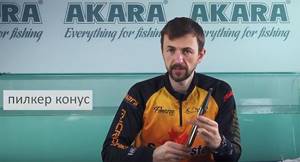
Photo 1 Jig (pilker) cone, also known as punda.
We take a jig cone from Akara, an unequipped jig cone Ni . (read earlier in the review of jigs for sea fishing).
In order to equip it with a hook, we will need either a tee, for example, a galvanized Akarovsky (Photo 2-1), or some kind of nickel-plated tee (Photo 2-2). Depends on your preferences.
You can use a hook, the so-called el hook (Photo 2-3), which is equipped with silicone peppers. You can use ready-made silicone peppers (Photo 3). You can use, for example, a tee equipped with an octopus. Can be equipped with a tee (Photo 2-4).
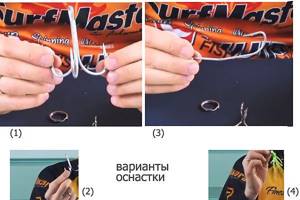
Photo 2 Equipment options.
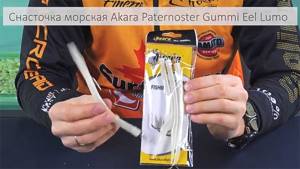
Photo 3. Akara Paternoster Gummi Eel Lumo marine rig. Ready-made silicone peppers
Akara has silicone octopuses for equipment in various sizes - glowing, lemon, red, green, etc. colors that attract fish.
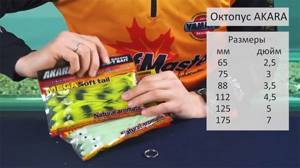
Photo 4. Akara silicone octopuses
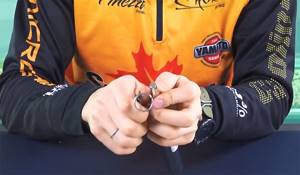
Photo 5 How to rig a jig. Insert the winding ring.
So, how to rig a jig . Take the winding ring. And we put it on our jig. As a rule, the jig is equipped from above, because the cone is often used when fishing in places that are quite heavily snagged. We put it on using pliers (Photo 5). And we equip it with, let’s say, “pepper”. This is what our cone equipped with a single hook with a silicone pepper looks like (Photo 6).
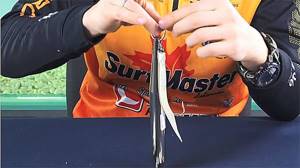
Photo 6. Cone equipped with pepper.
The cone can be equipped with an octopus . Let's take a tee and first equip it with an Akarov octopus. We cut off the “butt” of the octopus (Photo 7-1,2), insert the tee (Photo 7-3). It turns out we have such a handsome man (Photo 7-4).
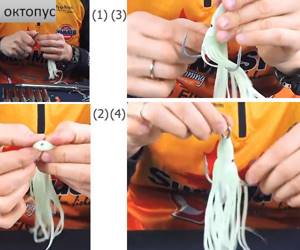
Photo 7. Equipped with a tee and silicone octopus.
We take a cone and place a tee on top. We get a cone equipped with a tee with an octopus. In principle, it may not be necessary to leave such long tails on the octopus. If anything, the octopus's tail can be cut off. But it depends on the preference of the fisherman.
Additional equipment for the jig at the bottom . You can also equip the bottom with a jig. You can hang it from below, also with a winding ring, a hook or an additional tee. But this is already fraught with the fact that you can get a large number of hooks.
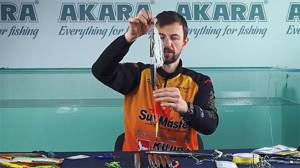
Photo 8 Bait equipment. Add a silicone pepper at the bottom.
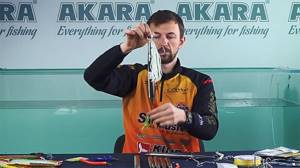
Photo 9. Bait equipment. Add an additional tee below.
Advantages of equipment from above . What’s good about equipping the cone on top is that when it comes into contact with the bottom, nothing clings to it. To get a hold, he needs to fly between the stones somewhere in the underwater ridge. As a rule, this kind of equipment is quite “non-sticky” to the bottom. That is, losing bait in such equipment is quite difficult.
What types of jigs are there?
The jig is a classic sea bait. But with the same success, jigs are also used in freshwater fishing, for example, when catching asp and perch. Marine and freshwater jigs do not differ in shape and appearance.
There are two main types of jigs :
- Fast jig – for fast jig. These jigs have an elongated body and the least resistance during flight and retrieve. These jigs are designed for fast, aggressive retrieves. This type of jig in the Black Sea is best suited for catching garfish, but also works well for other pelagic predators such as horse mackerel and bluefish.
- Slow jig – for a slow jig. These jigs have a more flattened body and generally more complex geometry. Slow jigs are suitable for smoother retrieves with long pauses. These jigs have a more active action on the breakup. They are universal and catch almost all fish in the Black Sea, but they perform best when fishing for horse mackerel.
- It is clear that there are a lot of types and shapes of jigs and there are models that, according to their purpose, are somewhere between fast and slow jigs. They fish excellently both on fast retrieves in the upper layers of water and on retrieves with long pauses.


Design features and applications of jigs
Their catchability was also in demand when fishing in reservoirs and rivers within the country. The best examples of jigs for cod turned out to be no less popular among fans of fishing for pike perch, asp pike and perch, both plumb and when jigging. Their size and shape have changed somewhat, but the equipment remains the same. But the high cost of such spinners is increasingly forcing local fishermen to make jigs with their own hands. First of all, it should be noted that the best jigs for sea fishing are heavy spoons for vertical lures. They can be classified according to several characteristic features: • First of all, by weight. Based on this indicator, jigs are selected depending on the fishing conditions. Depending on the speed of the current, the depth of immersion of the bait and wind speed, it can reach up to 700 and even 1000 g. • According to its design features. They can be round, tubular, polyhedral and flat. Traditionally, homemade jigs for cod have an aspect ratio of 6:1. Moreover, their thickness correlates with width as 1:2 and, in some cases, as 1:1. • According to the material of manufacture. These can be stainless or chrome-plated tubes filled with lead. Often there are samples made from profiled steel rods. When making homemade jigs for cod fishing, brass, cupronickel, copper and stainless steel are often used, with lead, sand and tungsten used to balance them. Important! The cost of sea spinners of this type sometimes reaches up to 25 € per piece, and their life expectancy is no more than two or three hours. That is why the ability to make jigs for sea fishing with your own hands is not only tactical, but also purely economic.
How to rig a jig?
An important question is how to rig a jig ? In fact, there are a lot of equipment options and their number is only growing every year. We look at some jig equipment from the Japanese, and come up with some ourselves. But the most important thing to understand is that there is no such thing as incorrect jig equipment; every proven installation will work better in some certain conditions, and worse in others. You definitely need to experiment!
The installation of a jig, most often, consists of two hooks: the main hook (attached to the back ring, like an oscillating spoon) and an auxiliary one, it is called an assist hook (attached to the front ring using a special cord). Let's take a closer look at the installation of each hook:
- In the classic version, the main hook of the jig is the tee. Less often they use a single hook (although this jig installation is quite effective, especially for garfish), or two single hooks at once.
- Also, the main hook of the jig can be tied on a retractable leash. A fluorocarbon leash 10-15 cm long is tied to the jig. A triple or single hook is tied at the end. In this installation, the main hook is often decorated with lurex.
- The assist hook also has many variations: mainly 1 or 2 single hooks decorated with lurex are used. The hook is tied with a cord to the upper eye of the jig. If there is only one hook, then it should be in the upper third of the jig. If there are 2 hooks, then 1 of them is attached in the upper third, and the second one is slightly lower in the middle of the jig. Less often, both hooks are at the same distance.
- Also, jig installations are not uncommon, where there is only an assist hook without the main hook. This jig equipment is used in the Black Sea when fishing in areas with a rocky bottom, where a triple hook at the end guarantees a dead hook.
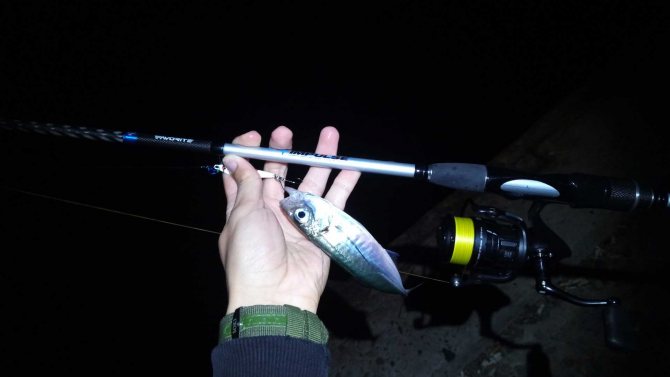
The idea of a retractable leash with a hook for a jig is as follows: when a garfish is not very active, it will prefer smaller prey and grab the fly rather than the jig itself. Also, sometimes a predator chases the bait, but does not catch it. In this case, such a montage provides a chance to turn up the modest fish.
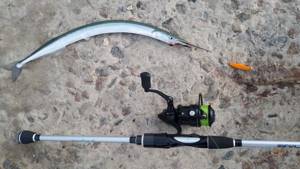
The assist is pretty important. Often the fish attacks the head of the bait, where there is no hook, and in the absence of a hook assist, it is not detected. Also, when fishing for garfish, the jig assist often digs into the fish additionally, even if the garfish was initially sitting on the bottom hook. Thus, the assist reduces the number of garfish escapes. When fishing for horse mackerel with a jig, using an assist hook sometimes allows you to get doublets (two fish at once per retrieve, one on the main tee, the second on the assist).
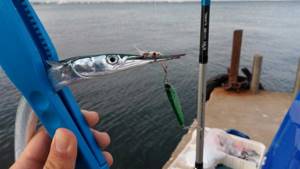
Jigs for perch
A jig is one of the varieties of vertical spinners. They are very good for long-distance casting and for more thoroughly tapping the bottom relief. Designed for deep fishing. When playing on the bottom, the jig makes a sound reminiscent of the clattering of a horse's hooves. Therefore, German fishermen gave the name “zockers” to this bait.
Externally, it is a small narrow fish, slightly curved in the tail, which is how the chosen game is achieved. This type of jig is the most popular among anglers.
At the beginning of their “career” zokkers were equipped with a single hook, which was initially soldered. Recently you can find jigs produced with a suspended tee. This bait is compact and quite heavy.
There are zokkers that have a weighted front part . When descending freely, he tends to assume a head-down position; has the most active play when upright. Thanks to this, such tsokkers work best in the classic “step”, and spinners use them quite often.
Zockers of more complex shapes mostly have edges . When the faceted jig rotates or oscillates, it creates an alternating play of light and this attracts fish. There is also a subtype of the screw .
cut have become widespread . In this version, the cut is made in such a way that the “head” is heavier than the “tail”. At the same time, the desired game is set.
Special perch jigs are called mini jigs ; they are quite diverse in both size and shape. Basically, fishing with these baits in the current can only be done from a boat or motorboat. For those who catch perch on the river, it is necessary to have in their arsenal as many tsokkers of different weights as possible. This will make it possible to adapt to strong and medium flow of water.
If the bait turns out to be light, it will not sink to the bottom, and if it is too heavy, it will not create the desired game, tempting the predator, and the perch will remain indifferent to the proposed bait. Having in your set jigs from six to twenty-six grams, you will fully provide yourself with baits that are suitable for any situation.
Also interesting: Spinner for perch for winter fishing
The color and design of the jig is directly related to the color of the water and the time of day. A silver jig is suitable during the day when the water is clear. Naturally colored zokkers are also used during the day. In twilight and night hours, jigs of golden shades work better. It is important to note that the treble hook must be freely suspended and have sharp points.
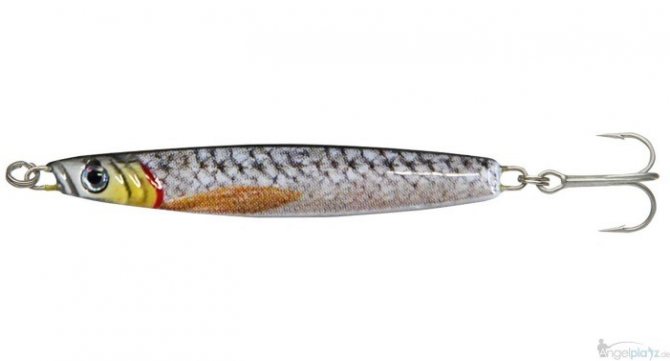
Hooks must be checked periodically, as they become dull when they hit the bottom. The main “braid” is combined with a monofilament leash (not so noticeable for perch), and they are connected by means of a swivel, which prevents the lines from twisting. For fishing with jig bait, it is better to use a short spinning rod with a test rating of 30 and a small, non-inertial reel.
Wiring with a jig is carried out in the following sequence:
in the tensioned line mode, the tsokker sinks to the bottom, while it is in stable contact with the bait. After the jig touches the bottom, the line-laying arm closes and the jig twitches with the rod. It must rise above the topography of the reservoir to such a height at which the bait, after descending, would definitely touch the bottom.
You need to monitor the current and release the line in time if necessary, without losing contact with the bottom. At the time when the jig touches the relief, it raises small cloudy clouds. This is similar to the movements of small fish during feeding, and being an irritant for the perch, it gives it the opportunity to grab the bait.
Light accumulative jigs differ from other varieties in that one side of the zokker is painted, while the other is not and is covered with accumulative paint. These baits are recharged in the sun and create a light green glow in the depths of the water for a long time. This type of jig works very well and brings excellent results when fishing for perch. There is one feature of this bait: a very large treble hook will not allow the lure to glide freely. In this case, the jig will acquire the properties of “nails”: it is known that vertical spoons can also be located at a greater distance from the axis.
Also interesting: Catching perch with a bombard
The method of playing light-accumulating jigs is the same as that of its other varieties. This is tapping the bottom, then lifting with periodic stops. Sometimes anglers use a different method of play: in a fresh hole, several sharp movements are made up and down with the tip of the fishing rod, and only after that they begin to fish in the usual way. This animation will immediately attract the perch, since the movements of the bait imitate a wounded and rushing fish.
Currently, there are a great many varieties of jigs, and you can only predict which one will be most effective on the reservoir of your choice through experimentation. And then the perch will not be able to resist the attractive tsokker offered to it.
Author: N.K
Category: Perch fishing
How to tie a jig?
Tying the jig is very easy. A fluorocarbon shock leader is attached to the main cord. The knot and length of the leash are used at the discretion and taste of the angler. I use an “old bride” knot, and I always measure the leash by eye, about 50-70 cm. The thickness of the leash is selected based on the fishing conditions and the gear used; I most often fish with 0.23 mm thick fluorocab. I have been using Sunline Siglon FC fluorocarbon for 2 seasons now. A clasp is attached to the leash, some use a swivel clasp. However, I did not notice any particular benefit from this.
The fewer parts there are in the installation, the more reliable it is and the less algae that hangs on it during wiring. And algae is a real problem when fishing with jigs in the Black Sea, especially when it is stormy. But I wouldn’t recommend giving up fasteners altogether. After all, sometimes you have to change jigs literally after 2-3 retrieves in order to find a suitable one that the fish will like.
Another interesting installation with which you can tie a jig is the use of an insert with a sub. 2-3 flies are tied to a fluorocarbon leash (the number is at the discretion of the angler); lurex flies are most often used, but more interesting options can be knitted. A fastener is attached to the end of the leash, onto which the jig is placed. Thus, there are more stimuli for the predator, which means there is a greater chance of attack. Also, this installation allows you to catch several fish at a time, this is especially true when fishing for horse mackerel.

Spinning rod for jigs
Spinning for jigs is the choice of every angler based on personal experience and preferences. In general, there are spinning rods designed for metal jig fishing. There are spinning rods for shore jigging, there are ones for fishing from a boat, if you are fishing with baits of 100 grams or more, and there are ones for light baits.
Specialized models for fishing with light jigs are often marked “Light game”, “Light Shore Jigging” and others. These spinning rods are available from Japanese manufacturers, such as Yamaga Blanks in the Blue Current series, Xesta, Tict and others. But unfortunately, the price tags for these rods are far from budget, and a novice angler will not be able to appreciate all the advantages of top-end rods due to lack of experience.
So what kind of spinning rod should be used for jigs in order to fish with them in the Black Sea? Let's look at it in order:
- Length. You shouldn’t go too small with the length of the spinning rod for jigs. It doesn’t matter whether the fishing takes place from a pier or from the beach, a spinning rod shorter than 240 cm in height should not be chosen. I consider the length of a spinning rod for jigs to be 250 cm universal; it will be comfortable for fishing from the pier and from the shore. But if fishing takes place exclusively on the shore or concentrations of fish are often located at a sufficient distance from the pier, you should think about buying a spinning rod with a length of 2.6-2.8 m.
- Tabular or Solid. For jig fishing, take only rods with a tabular tip. Soft solid tips will only interfere with wiring and prevent normal animation. They are needed for something else, for example, for rock fishing (although in this style of fishing many anglers prefer stricter sticks with Tabular or Hard Solid tips). Hard solid tips are also suitable for jig fishing.
- Build. It is advisable to choose spinning rods with a fast action or, even better, a regular fast action. These rods are best suited for jig fishing.
- Test. Since the main objects for fishing with jigs in the Black Sea are not very large, you should not use very large baits. But it’s also not worth getting smaller. The optimal top test for a spinning rod will be 12, 15, 18 g. In the summer, a lighter spinning rod with a test of up to 10-12 g will be enough, but in the fall, when strong winds blow, a jig of 15-18 g will seem like fluff. I also fished with heavier jigs of 30-35 g, but this did not bring good results. But even a medium mackerel, and sometimes small ones, readily grab a jig of 20 g.
- Power. The rod should not be overly powerful. Fishing should be fun. Sea fish, even small ones, are very strong, but if you catch Black Sea garfish with a spinning rod that was designed to catch sea bass, you will not feel all the joy of fishing.
- Weight. The lighter the rod is, the more comfortable it will be to fish with and the more sensitive it will be. Typically, the lighter the spinning rod, the more expensive it is. But even in a budget pricing policy you can find something that is not a log. So if you have a choice between two inexpensive rods with the same characteristics, take the one that is lighter.
- Brand and price. I will say from personal experience that a normal rod for jig fishing can be found in the price segment even up to 3 thousand rubles. For example, I fished with a Royal Spirit spinning rod from AliExpress and overall I was very pleased with it. In 2021, I fished with a Favorite Impulse 832L-T spinning rod. This rod is already at a higher level and gave me even more positive emotions. I will write a review about all the spinning rods that I used for jig fishing in the Black Sea, so subscribe to updates so as not to miss new publications.
Pay attention to the fishing line characteristics of the rod; it is advisable that the PE value should not be higher than 0.8. The optimal value will be 0.2-0.6, 0.3-0.6, 0.3-0.8 PE for spinning rods with bait tests up to 20 g. If the spinning rod has an upper bait test of 25, 30 or more grams, then in this case the upper PE value will be optimal in 1-1.2 PE.
What do you catch with jigs?
Like many spinning baits, the jig is designed to catch predatory fish. In the Black Sea, they mainly catch garfish and horse mackerel using jigs, but also laskir, bluefish, scorpionfish, sea dragon, sawfish and other predators. By the way, there are also cases when small mullet (chulara) also bite on the jig.
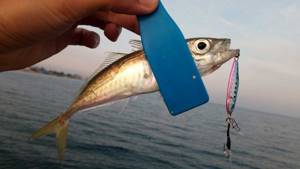
In freshwater bodies of water, fishing with jigs is not so common, probably due to the fact that lakes often have dense vegetation and shallow depths, and jigs sink quite quickly and cling to everything. Also, freshwater predators like a smoother presentation of the bait, unlike sea predators (although it happens the other way around, these are fish...).
Nevertheless, in the summer you can successfully catch perch using small jigs up to 10 g. It is also not uncommon to catch asp and other river predators using jigs.
Features and types of jigs
In the classical sense, a jig is a heavy, narrow-bodied spoon, the ratio of length to width is about 6:1. Many models have a round, hexagonal, rectangular or square section. The weight of the bait is decent, allowing you to quickly deepen it and keep it in the fishing zone, regardless of the strength of the current.
This category of baits is widely represented on the market. However, many models have a high cost, so anglers make jigs with their own hands, giving them the necessary characteristics, adapting them to specific fishing conditions and types of predatory fish.
Broadly speaking, the category of artificial lures “pilker” includes diverse narrow-bodied oscillating spoons. They can be divided into the following groups:
- Narrow-bodied spoons with a slight bend in the tail. This type of bait is most popular in sea fishing. Prominent representatives are jigs for cod, halibut and other bottom inhabitants.
- “Blank” with a weighted upper part. Such spinners have an attractive game when moving in steps. The most popular of this group are jigs for pike perch, which today are often used in a variety of freshwater bodies.
- A jig made from a cross-section of a metal rod of any shape. The most famous representative of this group is the Castmaster - a universal, phenomenally catchable spoon, once invented by the fishing company Acme.
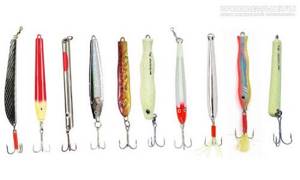
Sea jigs have a weight that can even reach a kilogram. They are not suitable for use in freshwater bodies. But small models of these spinners have taken great root among spinners and are used on rivers, reservoirs and lakes, catching asp, perch, pike perch, catfish and pike. For example, any jig for horse mackerel that allows you to successfully hunt for it in the water column will be suitable in closed reservoirs.
Advice! In the rivers and lakes of our climate zone, the most acceptable jigs are baits weighing 15–40 grams and no more than 7–8 cm long. In some cases, the size of the spoon can be increased or, conversely, reduced.
Fishing with a jig has its advantages:
- The ability to make ultra-long casts, fishing promising areas remote from the shore, when fishing from a boat is impossible or the predator is at a considerable distance from the spinner. This advantage of the bait plays a key role in fishing for asp.
- Different techniques for animating the spinner in any horizon are allowed.
- The bait is suitable for almost all types of fish inhabiting our water bodies.
- It is possible to make jigs with your own hands from scrap materials. The simplest spinner can be made from a rod of non-ferrous metal by simply cutting it at an angle. Nobody limits the fisherman’s imagination; he can come up with any shapes for jigs, as long as the bait works.
Fishing with jigs is problematic in difficult conditions. It is not suitable for snags or areas heavily overgrown with algae.
How to fish with a jig?
Now let's figure out how to fish with a jig . However, this is not a very tricky matter and if you are already familiar with spinning fishing, you will quickly figure out what’s what. We cast, take out the slack, lower the jig to the desired depth and start retrieving.
What types of jig wiring are there? In fact, wiring a jig is a purely creative matter for every angler. After a season of fishing, everyone develops their own movements, jerks, sequences that work best. The only true thing I can advise is that you shouldn’t try to fish with even movements; periodically you need to make at least a small jerk and a short pause!
Also, you should not do only monotonous wiring with uniform pauses and jerks. Try to diversify the wiring, alternating a long jerk and a short one, a short pause and a little longer. For example, an interesting wiring would be the following: short, short, long jerk, pause, long again, long and two short jerks and pause again.
You should also change the direction of the jerk. The jerk can be done to the right or left, directed downward, and so on. This year I really liked fishing with jigs thrown up and long pauses. This fishing has proven to be especially effective for horse mackerel.
Also, don’t get hung up on one template wiring. If the fish does not respond to changing colors, shapes and weights of baits, try changing the wiring. Change the fishing horizon, increase the fishing speed or, on the contrary, slow it down, take more pauses and longer ones.
To summarize, the correct placement of the jig is the one at which the fish bites, and the rest is a matter of creativity for each angler. And the best way to learn how to fish with a jig is through experience gained while fishing.
How to choose a jig?
Choosing a jig is not so easy. Now there are a lot of them, but which one should you choose? I recommend diversifying your arsenal of jigs with at least a couple dozen. Fish is unpredictable, one jig may work today and another tomorrow. Actually, this can be said about silicone baits, wobblers and even baits for peaceful fish.
You should not buy jigs of the same type in different colors; 2-3 colors of one model are quite enough. Try to diversify your arsenal of jig models (shapes) as much as possible. Different models of jigs have different action.
It is also worth diversifying the choice of bait weights. You need to have both small weights at the bottom of the spinning rod test and the maximum weights allowed for a spinning rod. There will be a storm, strong wind - the greater the weight of the bait, the more comfortable it will be to throw and catch. The weather will be good, the fish will be capricious, perhaps small jigs will be able to stir it up.
Color is a stumbling block for all spinning lures. My experience suggests that color, although secondary (after shape and weight), is still an important parameter. So it’s worth choosing a jig based on color. First of all, you should take natural colors, silver, greenish and bluish. You definitely need to have at least several models in bright or acidic colors, for example, yellow, orange, pink.
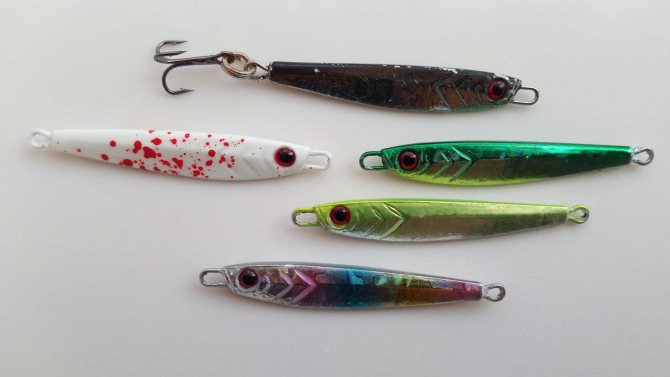
Decoration on the jig (dots, stripes, waves, etc.) can also have a positive effect on the bite. It is also worth choosing a jig with gradient colors, for example, silver turning to yellow and the like. This year, a rainbow-colored jig (until it shot off) worked well for me.
If you plan to fish at dusk or in the dark, you should definitely choose a light-accumulating jig! Without it, normal fishing in the Black Sea at night, most likely, will not work. The jig can be partially luminous (having dots, stripes, or simply partially covered with luminous paint) or completely luminous. It is advisable to have both options.
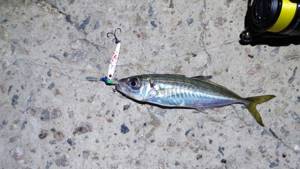
And now the most important question for many: should you choose expensive Japanese jigs or relatively cheap Chinese copies? If finances allow, it is better to buy branded jigs. Many excellent jigs, tested in the Black Sea, are produced by Hayabusa, Xesta, Ecogear, Maria, Major Craft and others.
But you can successfully fish with more budget models of jigs. Moreover, in many respects they repeat or even copy the shapes and colors of famous brands. I very often fish with budget jigs from AliExpress. Now there is a very good selection of fairly high-quality jigs, for example, I really liked the jigs from AllBlue.

You can also choose handmade jigs, especially if they have positive reviews.
Where to buy a jig for sea fishing?
Where to buy a jig for sea fishing, in particular for fishing in the Black Sea? Look for jigs in stores in your city; it’s also worth looking at these baits on bulletin boards; you might find excellent handmade models. Of course, jigs can be purchased online. Below you will find links to stores that have a good selection of jigs.
- Jigs ALLBLUE
- Other jigs on AliExpress
- Japanese signature jigs
- If any of the above links have stopped working, please let us know via the feedback form.
Don't forget to use cashback if you buy on AliExpress. One of the best and proven services for this is LetyShops.
Friends, you have the opportunity to be the first to know about new publications! To do this, subscribe to site updates (don't forget to confirm your subscription by clicking on the link in the email). Also subscribe to our groups on social networks: Vkontakte, Instagram.
Don't forget to share with your friends!
Features of catching predators with jigs for sea fishing
Fishing at sea or in large freshwater areas forces the spinner to stock up on heavy artificial baits. Only in this case can you count on a good catch. One of the most effective types of spinners are jigs for sea fishing. They allow you to hunt both in the vast expanses of the sea and in deep freshwater reservoirs. What are jigs, what types are there, and how to use them?
A distinctive feature of all jigs is the elongated purlin shape of the body. Essentially, this bait is a heavy oscillating spoon. On one side of the jig there is a soldered loop for fastening with fishing line, on the other end a treble hook is attached to the same loop. To give the bait more mass while maintaining a narrow elongated body, manufacturers use several technologies.
- The simplest way to make spinners of this type is to use a profile wheel. The workpiece is cut on both sides at a certain angle, holes are made at the ends or loops are soldered.
- Many spinning anglers are familiar with the homemade tube bait. Some jigs are made from a tubular material that is then filled with lead.
- A number of manufacturers cast all bait from lead in special molds. As a result, the body of the jig resembles a live fish.
- Triangular baits are made from a metal sheet, which is first bent into a triangular profile, followed by soldering the seam. The internal cavity is filled with molten lead.
Photo 1. Installation of the jig.
Jigs can be used both in open sea conditions and in wide freshwater areas. Drawing a line between marine and freshwater models is quite difficult.
- In general, jigs for sea fishing are distinguished by their larger dimensions and greater weight. Such properties of the bait allow you to successfully hunt cod, halibut or catfish. Fishing is carried out from a boat or ship in a vertical position.
- You can catch freshwater predators such as pike perch and asp with more compact models. Since fishing is most often carried out using the jig method, the flight characteristics of baits come to the fore. Although vertical fishing from a boat is also quite effective.
Sea and freshwater jigs can be divided into several groups. One classification is based on the manufacturing method. However, in this division there is no relationship with the game of the bait. In this regard, it is better to adhere to the following gradation, which takes into account the shape of the body.
- The most popular among anglers today are jigs with a narrow molded body shape. They have a characteristic bend located in the tail area. Thanks to this geometry, the jig has an attractive action for predators.
- In some modifications the upper part of the bait is heavier. This jig is good because it works equally effectively both when fishing vertically and when fishing with a classic step. Thanks to the heavy head, the spinner has a vertical component of the game.
- Vertical spoons, converted into jigs by cutting the head and tail parts, are also in demand among fans of spinning rods. It is important that the head of the bait remains heavier than the tail.
- For vertical spinning or jigging, anglers often use elaborately shaped jigs with a large number of edges. Such a bait in the water forms an alternating play of light that attracts the attention of a predator.
